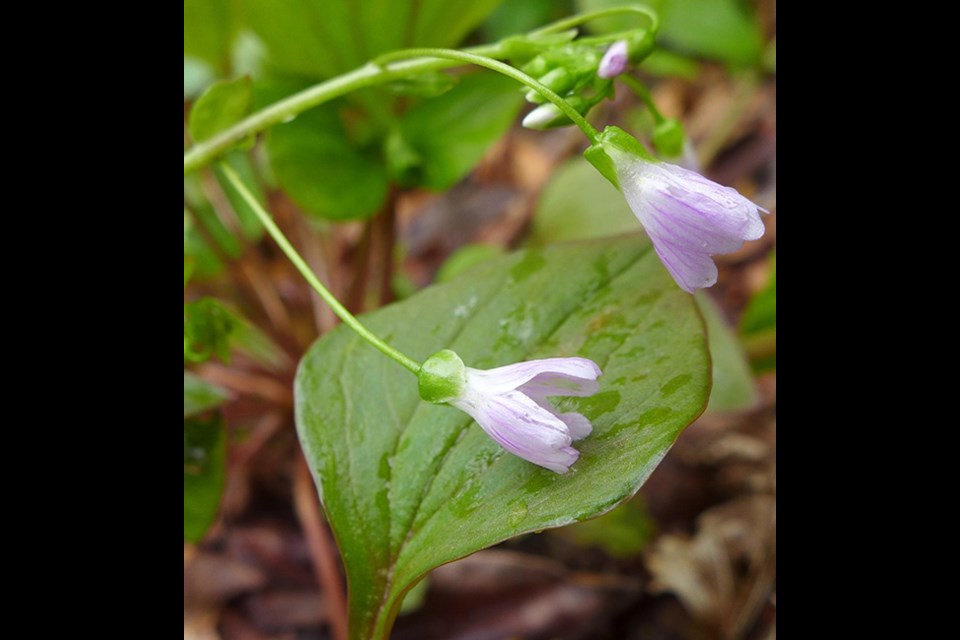The combination of spring rain and sun make mid-April the perfect time to spot blooming salmonberries, purple sweet-cicely, Pacific bleeding heart, Siberian miner’s lettuce and other plants along trails throughout Squamish.
With these plants on their list, the Squamish Environment Society is holding its first nature walk of the season this Sunday at 9 a.m. at the north end of Woodpecker Trail, located along the Spit Road.
“Flowers bloom earlier along the Woodpecker Trail than they do in some other areas,” said the walk’s guide, Judith Holm, a citizen scientist who is gradually documenting Squamish’s plant life.
Holm holds degrees in education and geography but, for more than a decade, she has focused on field botany by combining her mountaineering experience with documenting plants that are difficult to access.
She is leading the group on a two-hour walk in search of the captivating plants that inhabit this particular area of Squamish, including rosy twisted-stalk, yellow stream violet, black twinberry, Pacific crab-apple, vine maple, bigleaf maple and Hooker’s fairy bells, a white bell-shaped flower that droops towards the forest floor.
Although it’s difficult to predict which species will make an appearance, Holm will also be on the lookout for birds that live in the area, such as wood duck, hairy woodpecker, Steller’s jay, chestnut-backed chickadee and red-breasted nuthatch.
Woodpecker Trail is in the Skwelwil'em Squamish Estuary Wildlife Management Area, a region Holm has documented in a brochure she will hand out on her walk.
“Right now the trails are lush and green with spectacular growth,” said Vanessa Isnardy, the society’s coordinator.
She recommends bringing along a hand lens or magnifying glass to see the intricate details on the plants and to wear shoes that can get damp and a bit muddy.
“It’s a great time of the year to explore these trails and see what makes Squamish unique.”
Black twinberry, for example, is unique to the Pacific Northwest and grows along the Woodpecker Trail. The native plant is also known as an inkberry because of the fruit’s dark colour and bracketed honeysuckle due to the showy flower bracts that grow along with the black fruit.
The second nature walk, to take place on Sunday, May 29, will explore South Dyke Trail on a two-hour walk, with an added hour along an adjacent route.
The guide, Barb Hinde, is an herbalist and retired organic farmer who is interested in what nature provides for medicinal and edible purposes and how these plants grow in their natural environment.
For more information about the nature walks, visit squamishenvironment.ca.



